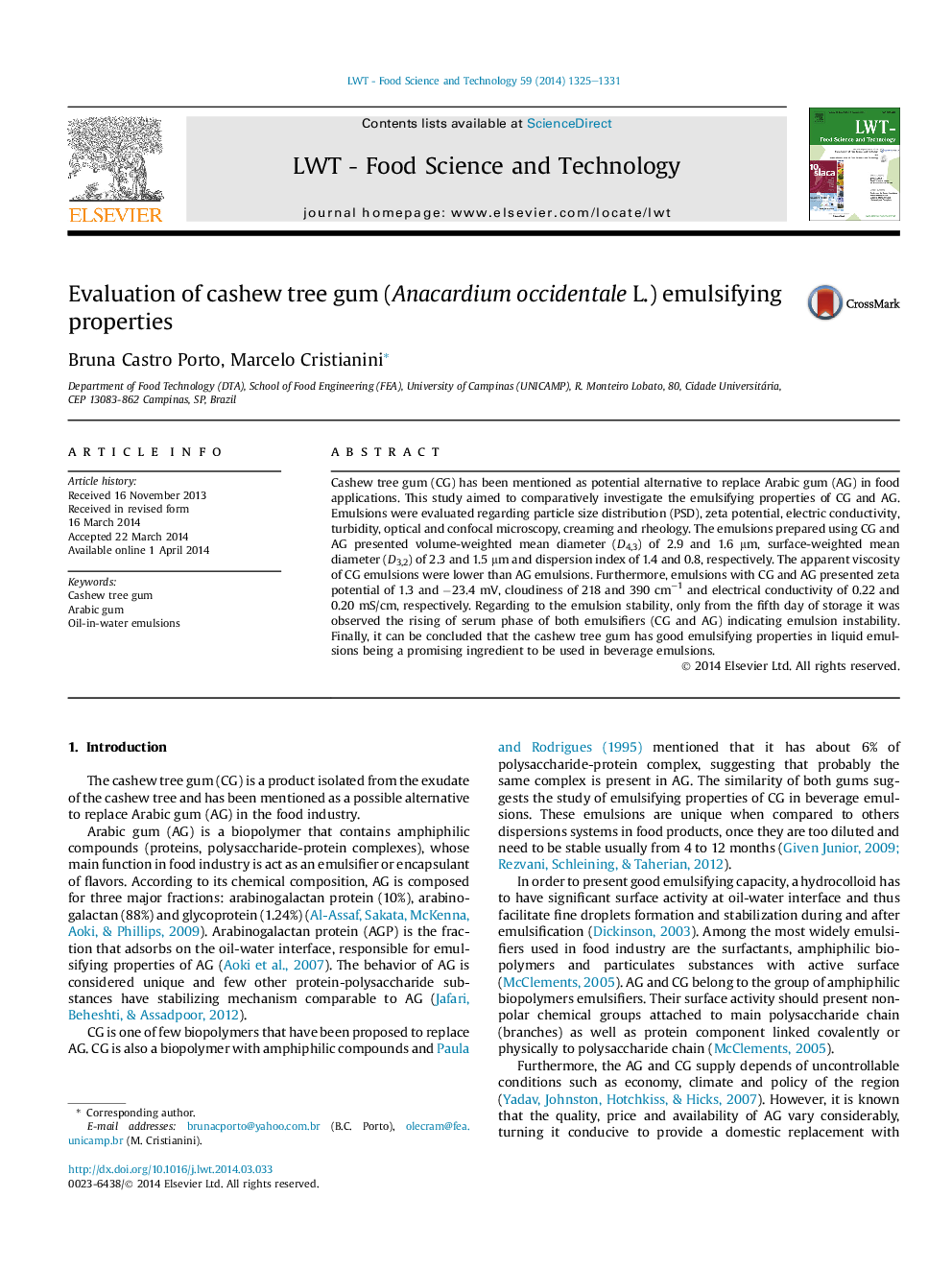| Article ID | Journal | Published Year | Pages | File Type |
|---|---|---|---|---|
| 6402774 | LWT - Food Science and Technology | 2014 | 7 Pages |
â¢The cashew tree gum presented good emulsifying properties.â¢Cashew tree gum presented lower apparent viscosity emulsions than Arabic gum.â¢The cashew tree gum and the Arabic gum emulsions remained stable for the same time.â¢The cashew tree gum was able to adsorbs on the interface oil-water.
Cashew tree gum (CG) has been mentioned as potential alternative to replace Arabic gum (AG) in food applications. This study aimed to comparatively investigate the emulsifying properties of CG and AG. Emulsions were evaluated regarding particle size distribution (PSD), zeta potential, electric conductivity, turbidity, optical and confocal microscopy, creaming and rheology. The emulsions prepared using CG and AG presented volume-weighted mean diameter (D4,3) of 2.9 and 1.6 μm, surface-weighted mean diameter (D3,2) of 2.3 and 1.5 μm and dispersion index of 1.4 and 0.8, respectively. The apparent viscosity of CG emulsions were lower than AG emulsions. Furthermore, emulsions with CG and AG presented zeta potential of 1.3 and â23.4 mV, cloudiness of 218 and 390 cmâ1 and electrical conductivity of 0.22 and 0.20 mS/cm, respectively. Regarding to the emulsion stability, only from the fifth day of storage it was observed the rising of serum phase of both emulsifiers (CG and AG) indicating emulsion instability. Finally, it can be concluded that the cashew tree gum has good emulsifying properties in liquid emulsions being a promising ingredient to be used in beverage emulsions.
